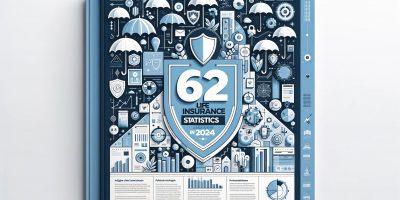
62 Life Insurance Statistics in 2025
Discover how integrating life insurance into your financial planning can provide you and your loved ones protection and long-term security.

From small purchases like sandwiches to larger ones like iPhones and cosmetic surgeries, there seems to be no limit to what can be bought in installments these days, thanks to the latest fintech innovation of Buy Now, Pay Later (BNPL).
While BNPL promises quick, interest-free loans and greater consumer flexibility, it is not without risks.
Hidden costs, lack of financial literacy, and regulatory gaps are just some of the challenges associated with this popular financing option. While the value proposition of BNPL is undeniable, the possibility of spiraling debt and uncontrolled spending, especially in times of economic instability, looms large.
Given the growing threat of a recession and a rising cost of living, it is more important than ever to understand what BNPL is and how it affects our financial wellness.
What are buy now pay later services, and why have they become a global phenomenon in less than a decade?
In simple terms, BNPL is a financing option that allows customers to purchase goods or services without paying the full amount upfront. Instead, customers can make payments over time, typically in installments. In many ways, BNPL can be considered a type of consumer credit reinvented through digitalization and transformed to suit modern times.
The convenience and cost-effectiveness of BNPL plans have made them a popular choice for consumers of all ages across the globe. According to a recent survey, 43 percent of Americans have used a BNPL service at least once, up from 31% in 2021, indicating a growing trend.
With the pandemic supercharging a surge in e-commerce activity, consumers increasingly engage with merchants through mobile and web storefronts, making BNPL an ideal choice for those seeking convenient and flexible payment solutions.
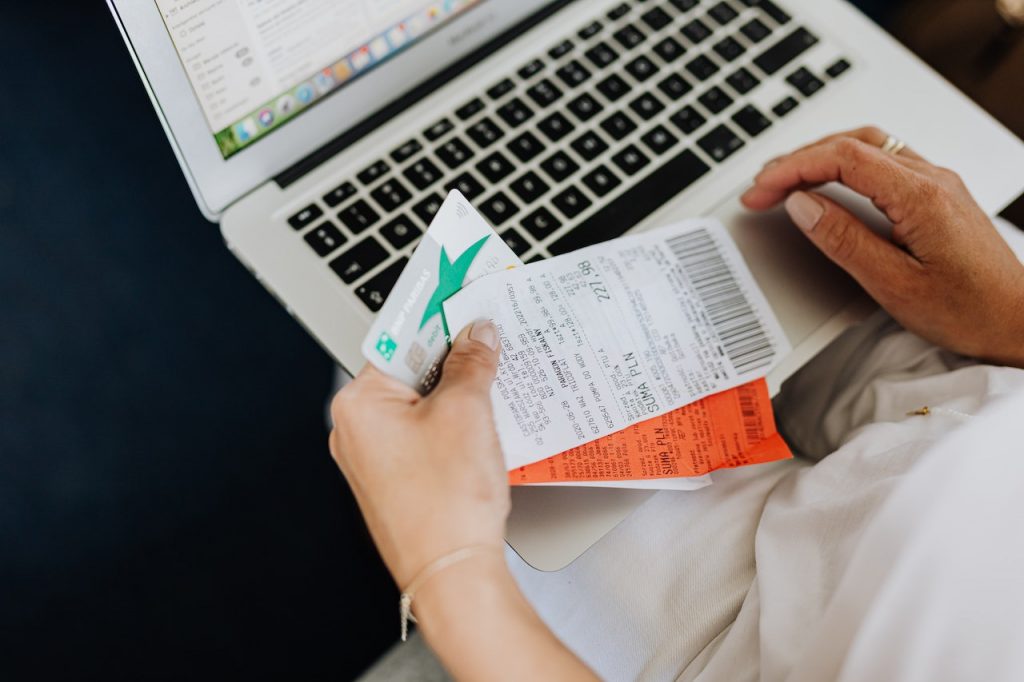
Today, BNPL programs are available seemingly everywhere, with an increasing number of big-name retailers like Amazon, Walmart, Target, and Sephora using them. But with so many large companies jumping in with their own offerings, it can be difficult to untangle what BNPL really is.
Is it a reinvention of the installment plan, a new form of consumer credit, a revival of layaway programs, or an e-commerce marketing tool?
The answer is all of the above.
So, what are buy now pay later companies?
The point-of-sale financing market in the US is dominated by five providers: Afterpay, Affirm, Klarna, Quadpay, and Sezzle. These fintech companies have made significant strides in the e-commerce space over the past few years and collectively account for over 95% of the market based on the number of app downloads.
From a merchant’s perspective, point-of-sale financing can boost sales, so more and more merchants are eager to partner with BNPL providers.
The BNPL model charges merchants a fee, typically ranging from 5% to 8% per transaction, substantially higher than the fees charged by credit card companies (2-3%). These fees enable BNPL companies to offer the service for free to consumers.
Retail therapy has long been a go-to for people looking to lift their spirits and add a little excitement to their day. However, indulging in a shopping spree can often result in financial stress, leaving many with buyer’s remorse.
Nevertheless, an alternative option for consumers is emerging in the shopping world: Buy Now Pay Later (BNPL).
But how does BNPL work, exactly?
Unlike traditional bank loans, which are typically used to finance big-ticket purchases like cars or houses, BNPL is a point-of-sale product. It allows borrowers to access an instant, short-term loan with a fixed repayment schedule, often including the option for equated monthly installments (EMIs) after an interest-free period.
BNPL providers have a relatively lenient application process as compared to traditional lending institutions, with most only asking for basic requirements:
Different loan providers may have varying loan terms, including the payment schedule time frame, interest rate, late fees, and penalties, and whether a soft credit inquiry is required or not.

Before granting a loan, BNPL companies usually perform a soft credit inquiry, which doesn’t impact a credit score, unlike a hard credit pull.
However, it’s important to note that while soft credit checks are harmless, missing a payment to a BNPL provider can negatively impact an individual’s credit score. These companies can report late payments to consumer credit bureaus, which can have a lasting impact.
In addition, three major U.S. credit bureaus have announced plans to include installment loans on their credit reports. This is good news for consumers that pay on time, as it could improve their credit scores.
As BNPL services become more readily available to consumers, people are utilizing these services to finance a wide range of purchases. The most prevalent categories are:
These figures indicate that BNPL services are not limited to specific types of products but are used across a broad range of categories. Eligible products range from less than $100 to several thousand dollars, and approval takes just minutes without a hard credit inquiry.
So, how to use buy now pay later services?
The process is simple:
In a typical “Buy Now Pay Later” structure, purchases ranging from $50 to $1000 are divided into four equal installments. The first installment, which serves as a down payment, is paid at checkout, with the following three installments due at two-week intervals over the next six weeks.

While BNPL payments are marketed as free for customers with 0% interest rates, this can be misleading.
Typically, a BNPL service is free to customers as long as they make repayments on time. However, when a borrower fails to make timely payments, interest rates can increase to 36%. According to the Consumer Financial Protection Bureau, most BNPL lenders impose late fees of $7 per missed payment on an average loan size of $135.
Not only that, but if a consumer falls behind on their payments, late and potentially financing fees will be charged, and persistently delinquent accounts may be sold to debt collection agencies.
|
Pros
|
Cons
|
|
Convenience - BNPL services offer a quick and easy checkout process, allowing customers to make purchases without having to input credit card information or create an account with the retailer. |
Risk of overspending - Because BNPL services allow customers to defer payment, it can be tempting to spend more than they can afford at the moment, leading to financial difficulties later on. |
|
Interest-free periods- Some BNPL services offer interest-free periods, allowing customers to spread out the purchase cost over time without incurring additional fees. |
Late fees and interest charges - If individuals don't pay off their balance in full before the end of the interest-free period or miss a payment, they may be charged late fees and interest charges, which can add up quickly. |
|
Budgeting flexibility - BNPL services can provide flexibility in budgeting by allowing consumers to pay for purchases in installments instead of all at once. |
Impact on credit score - Failing to make payments on time or carrying a high balance on a BNPL account can negatively impact an individual’s credit score, making it more challenging to secure loans or credit in the future. |
In order to gain insight into the growing appeal of BNPL, it is necessary to understand the primary demographic that utilizes it.
BNPL is particularly attractive to those who may not have the funds to pay for their purchases upfront, as well as first-time borrowers who are often denied loans in the traditional banking system due to a lack of credit history. Hence why, these services are particularly popular among younger generations.
In 2020, Millennials constituted the largest group of BNPL users, accounting for 40% of the total user base. However, Gen Z consumers are expected to eventually catch up, as they are already adopting BNPL at a higher rate than their Millennial peers.
Although fintech solutions have undoubtedly enhanced financial inclusion and expanded access to a broader range of financial products and services, the critical question remains: what has been the trade-off?
The combination of younger consumers, who are generally less financially literate, and the relative ease of access to this popular financing option can be a dangerous mix. One of the most significant risks is to misuse or overuse of BNPL services, which can significantly affect the financial success of future generations.
Unfortunately, the latest financial wellness statistics confirm those concerns.

A study by the National Bureau of Economic Research revealed that utilizing BNPL leads to a lasting increase in overall spending, amounting to roughly $60 per week, stretching the average household retail budget by 30 percent.
According to a survey by Cardify, a data firm that monitors consumer spending, almost half of the respondents stated that they tend to spend between 10% to over 40% more when utilizing the BNPL scheme than using a credit card.
The survey also revealed that two-thirds of BNPL users are making questionable buying decisions, purchasing more “wants” such as jewelry and other luxury items they may not have otherwise bought.
Unsurprisingly, using BNPL raises the probability of dipping into savings and incurring various overdrafts, non-sufficient funds, and other late payment charges.
A recent CFPB report from March 2023 shows that users of BNPL are, on average, far more likely to be indebted and have bank overdrafts, payday loans, pawn loans, and other high-interest financial services.
The Centre for Financial Capability reported that nearly a quarter of adults in the UK who had used BNPL had missed their payment deadlines, with the figure rising to 35% among individuals aged 18 to 34. Like young credit-card users, individuals under the age of 25 who use BNPL services exhibit the highest default and delinquency rates.
While financial wellness is a primary concern among all age groups, bridge millennials and millennials faced the greatest difficulty in managing their finances, with 70% reporting living paycheck to paycheck in 2021.
In the same period, Gen Z consumers also saw a significant rise in living paycheck to paycheck, increasing from 55% in May to 65% in December. Adding to the complexity, Gen Z consumers had the lowest average savings, with only $1,158.
The current economic climate of unemployment, rising inflation, and instability have made it increasingly difficult for Millennials and Gen Z consumers to make ends meet.
In light of these circumstances, it is vital to promote financial wellness programs and improve financial literacy in the United States, particularly for those who are vulnerable and at risk of falling into financial hardship.



The buy-now-pay-later (BNPL) product is experiencing rapid growth, with the number of BNPL loans in the US increasing by 970% between 2019 and 2021.
However, there are also concerning trends that must be evaluated.
Regulators are investigating concerns over consumer risks associated with accumulating debt, regulatory arbitrage, credit reporting, and data harvesting.
One of the main issues is regulatory arbitrage, where companies take advantage of regulatory gaps or differences to offer their consumers more favorable terms or conditions.
For example, some BNPL lenders make it difficult for borrowers to initiate product returns or disputes, requiring them to contact the merchant first. Others require autopay enrollment, making it difficult for borrowers to remove autopay or manage their accounts effectively.
There are also significant variations in the fees charged by different BNPL lenders, including late and other consumer fees.
This lack of uniformity makes it challenging for consumers to compare products and make informed decisions.
Furthermore, some BNPL lenders report defaults more frequently than successful repayments to credit-reporting agencies, potentially putting consumers’ credit ratings at risk.
In response to these concerns, three major US credit bureaus have announced plans to add information on consumers’ BNPL loans to their credit reports. This increased transparency should help consumers make better-informed decisions and encourage BNPL lenders to adopt more responsible lending practices.
Another issue is consumer data harvesting, which can threaten privacy, security, and autonomy. It also raises concerns about the consolidation of market power in the hands of a few large tech platforms that own the largest volume of consumer data.
Consequently, this could reduce long-term innovation, choice, and price competition. There is also a risk that harvested data could be used to offer targeted discounts to some customers but not others, leading to different groups of consumers paying different prices for the same goods.
Finally, BNPL has been criticized for normalizing debt and instilling a false sense of financial security in consumers. Influencer marketing of BNPL platforms on social media adds to the attractiveness of using BNPL credit to purchase items, encouraging overspending and potentially leading consumers to spend money they do not have.
To address these concerns, regulators should establish clear guidelines for BNPL lenders, including responsible lending practices, transparency requirements, and data privacy protections. Companies should also adopt more consistent pricing and fee structures to enable consumers to make better-informed decisions.
Additionally, influencers and social media platforms should take responsibility for the content they promote and ensure they do not encourage harmful shopping habits.

To fully understand the implications of BNPL, it is essential to ask the question, “what is buy now pay later?” and educate oneself on its benefits and potential pitfalls.
While BNPL can provide convenience and flexibility, consumers should carefully consider their ability to repay the amount owed and read the terms and conditions before using a pay-later payment method.
Disclosure: Some of the products featured in this blog post may come from our partners who compensate us. This might influence the selection of products we feature and their placement and presentation on the page. However, it does not impact our evaluations; our opinions are our own. The information provided in this post is for general informational purposes only and should not be considered as legal, tax, accounting, or investment advice. For advice on specific issues, please consult with a qualified professional.
Senior Content Writer at Shortlister
Browse our curated list of vendors to find the best solution for your needs.
Subscribe to our newsletter for the latest trends, expert tips, and workplace insights!

Discover how integrating life insurance into your financial planning can provide you and your loved ones protection and long-term security.
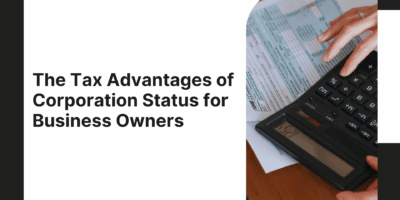
What if your biggest tax lever isn’t a deduction but your legal structure?
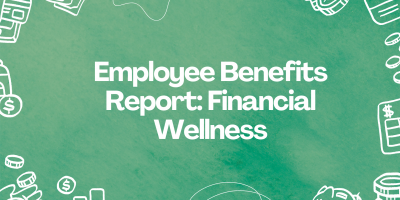
In an era where 60% of Americans live paycheck to paycheck, companies are increasingly recognizing the urgent need for comprehensive financial wellness programs.
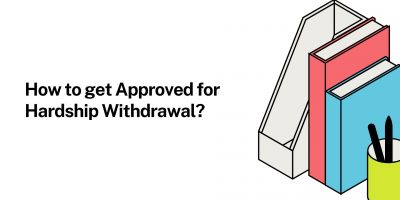
Today, most businesses understand that employee financial stress negatively affects their health and productivity, thus permitting these withdrawals under specific guidelines.
Used by most of the top employee benefits consultants in the US, Shortlister is where you can find, research and select HR and benefits vendors for your clients.
Shortlister helps you reach your ideal prospects. Claim your free account to control your message and receive employer, consultant and health plan leads.